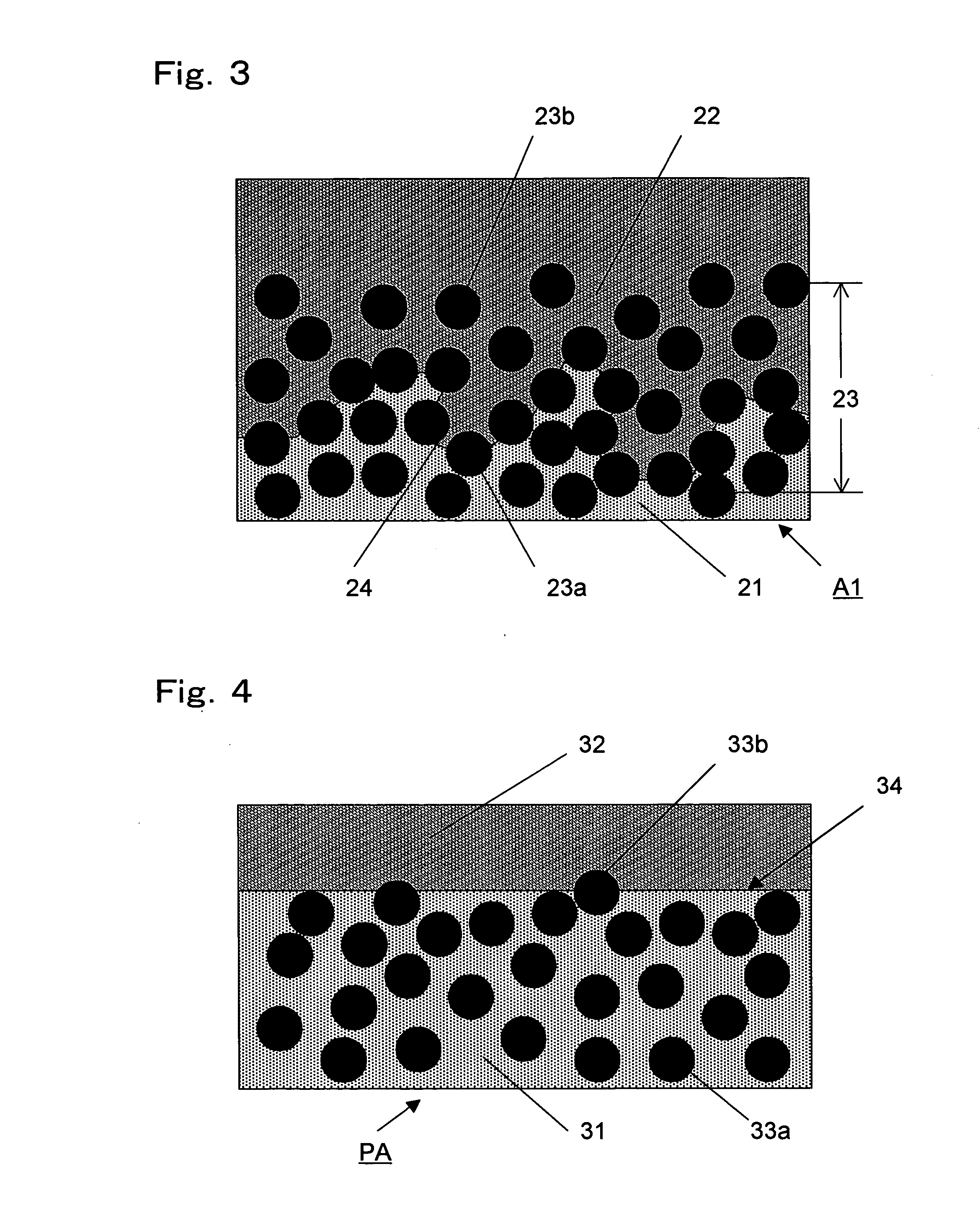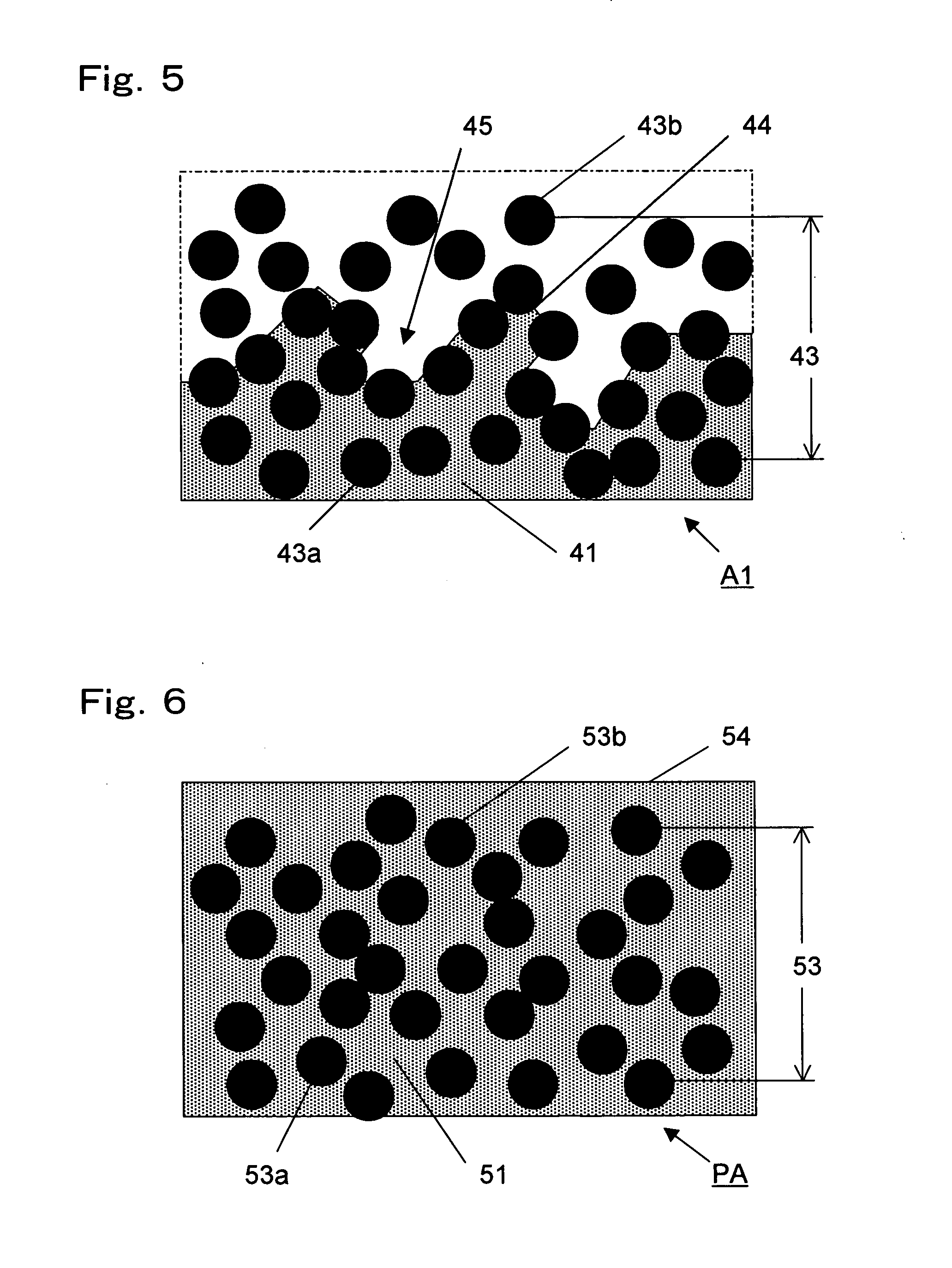Layered product, electromagnetic-shielding molded object, and processes for producing these
a technology of electromagnetic shielding and molded objects, applied in the field of layered products, can solve the problems of inconvenient thermosetting resin layered product, difficult reduction of production cost, etc., and achieve the effects of reducing weight, and reducing thickness and weigh
- Summary
- Abstract
- Description
- Claims
- Application Information
AI Technical Summary
Benefits of technology
Problems solved by technology
Method used
Image
Examples
first embodiment
of the Layered Product of the Invention:
[0067]FIG. 1 shows a layered product 5. The layered product 5 consists of five layers sequentially laminated from a bottom face 4a to a top face 4b. That is, the layered product 5 consists of a first layer 1a, a second layer 2a, a third layer 3, a fourth layer 2b and a fifth layer 1b.
[0068]FIG. 2 shows an expanded sectional view showing a part of the first layer 1a. FIG. 2 was prepared based on a photograph obtained by photographing a cross section of a part of the first layer 1a using a scanning electron microscope (SEM).
[0069] The first layer 1a is an example of the layered product A1 of the invention. The layered product A1 (first layer 1a) comprises a thermosetting resin layer 11, a thermoplastic resin layer 12 and groups of reinforcing fibers 13 comprising numerous continuous filaments 13a and 13b. The thermosetting resin layer 11 and the thermoplastic resin layer 12 are integrated while forming ruggedness at the interface 14 between th...
second embodiment
of the Layered Product of the Invention:
[0103]FIG. 9 shows an integrated molded object C2. In FIG. 9, the molded object C2 consists of a layered product A2 of the invention forming a top board 101 and a structural member B2 forming a frame 102. In the molded object shown in FIG. 9, the top board 101 (layered product A2) is integrated with the top faces of the rise wall portions of the frame 102 (structural member B2), and it is an example of the electromagnetic-shielding molded object C2 such as a personal computer housing.
[0104] In FIG. 9, the layered product A2 (top board 101) of the invention as a component of the electromagnetic-shielding molded object C2 consists of a thermosetting resin as the matrix resin and groups of conductive continuous reinforcing fibers arranged in the resin, and has a film made of a thermoplastic resin composition described later formed at least partially on the surface of the layered product A2 (top board 101) (since this surface is the bottom face o...
examples
[0202] The invention is described below more particularly based on examples and comparative examples. All the mixing rates (%) shown in the examples and comparative examples are values based on weight percent, unless otherwise stated.
PUM
| Property | Measurement | Unit |
|---|---|---|
| Temperature | aaaaa | aaaaa |
| Temperature | aaaaa | aaaaa |
| Temperature | aaaaa | aaaaa |
Abstract
Description
Claims
Application Information
 Login to View More
Login to View More - R&D
- Intellectual Property
- Life Sciences
- Materials
- Tech Scout
- Unparalleled Data Quality
- Higher Quality Content
- 60% Fewer Hallucinations
Browse by: Latest US Patents, China's latest patents, Technical Efficacy Thesaurus, Application Domain, Technology Topic, Popular Technical Reports.
© 2025 PatSnap. All rights reserved.Legal|Privacy policy|Modern Slavery Act Transparency Statement|Sitemap|About US| Contact US: help@patsnap.com



